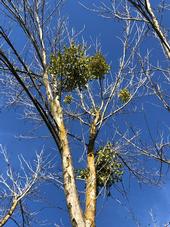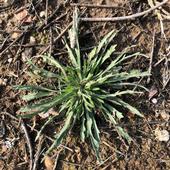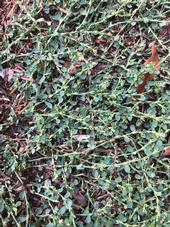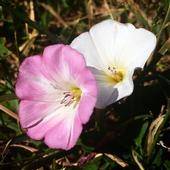- Author: Lynn M. Sosnoskie

What are mistletoes?
Mistletoes (Arceuthobium spp. [dwarf mistletoes], Phoradendron spp. [American mistletoes], and Viscum album. [European mistletoe]) are evergreen, flowering plants that parasitize trees and shrubs to acquire water and nutrients. All dwarf and American mistletoes occurring in California are native species whereas Viscum album was introduced to California from Eurasia. Although sometimes considered as undesirable pests, mistletoes may be important components of local ecosystems. For example, the seeds of some mistletoes can serve as food sources...
- Author: Lynn M. Sosnoskie

The first step in developing an effective weed management program is being able to properly identify the weed species that are infesting a field. But why? Why is weed identification so important? Simply stated, because not all weeds are created equal. Species differ with respect to their emergence timing, life history traits, competitive interactions with the crop, potential to harm livestock, and sensitivity to available herbicides, among other characteristics. Consequently, the type and timing of weed control events need to be designed to target problematic species so that control is maximized, weed seed return to the soil seedbank is minimized, and crop yields are protected.
Unfortunately, weed identification is not a simple...
- Author: Lynn M. Sosnoskie
South Sacramento Valley Processing Tomato Production Meeting
When: Thursday, January 10, 2019
Time: 7:45am to 12:00pm
Where: Woodland Community Center (2001 East Street, Woodland, CA 95776).
Agenda:
7:45 DOORS WILL OPEN — COFFEE AND REFRESHMENTS WILL BE AVAILABLE
8:15 Broomrape- a...
- Author: Lynn M. Sosnoskie

Recently I was asked to help identify prostrate knotweed (Polygonum aviculare) that was collected from an alfalfa field. Admittedly, the tough and wire-like specimen that was submitted to me at the end of autumn didn't much resemble the succulent seedlings that I have often observed emerging in tree and vine systems in early spring. Consequently, I dug out my 'Weeds of the West' and 'Weeds of California and Other Western States' books and double-checked with colleagues to ensure that my ID was accurate. This post is meant to build on that effort and describe the morphological traits that are characteristic of prostrate knotweed and how to differentiate the species from a similar-looking weed, spotted spurge (Euphorbia...
- Author: Lynn M. Sosnoskie

Field bindweed (Convolvulus arvensis) is a perennial plant in the Convolvulaceae family (which is also the family of dodder (Cuscuta spp.), morningglories (Ipomoea spp.), and alkaliweed (Cressa truxillensis)). The species possesses an extensive root network (v



